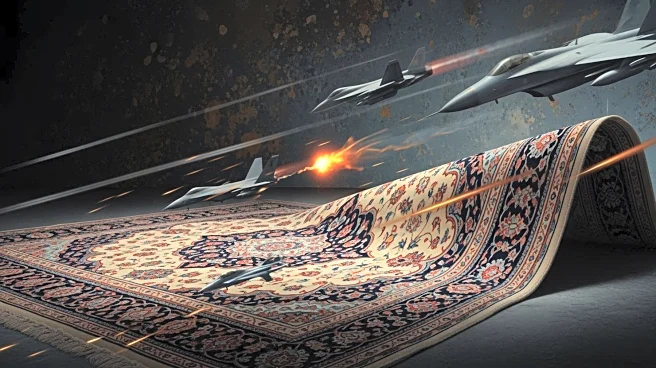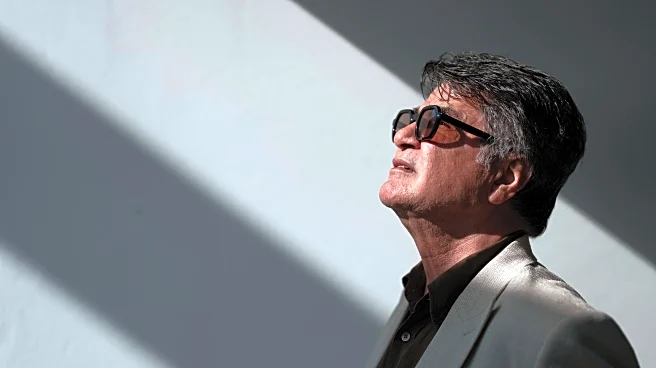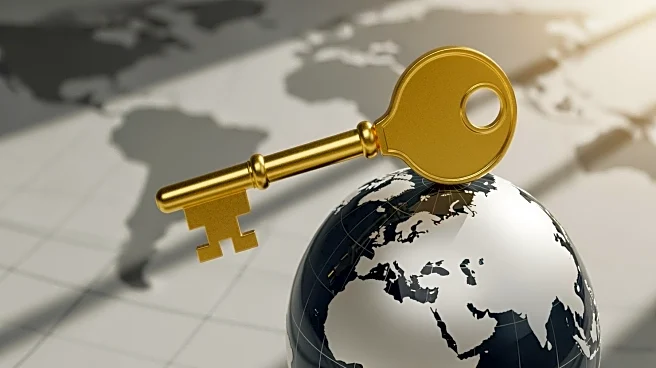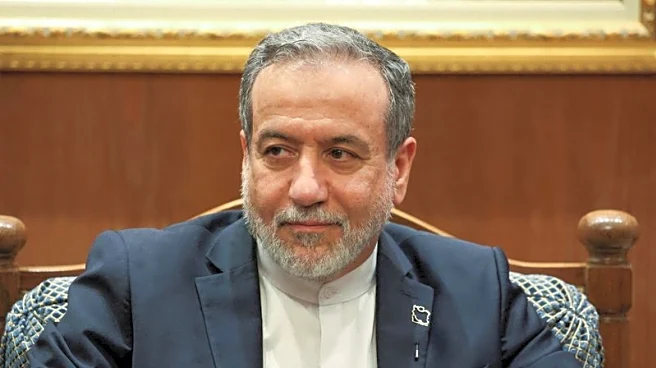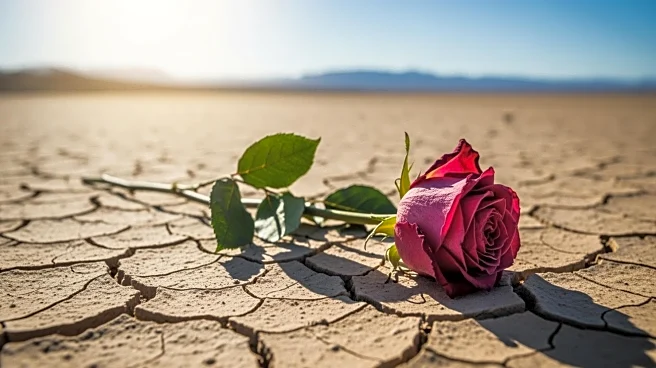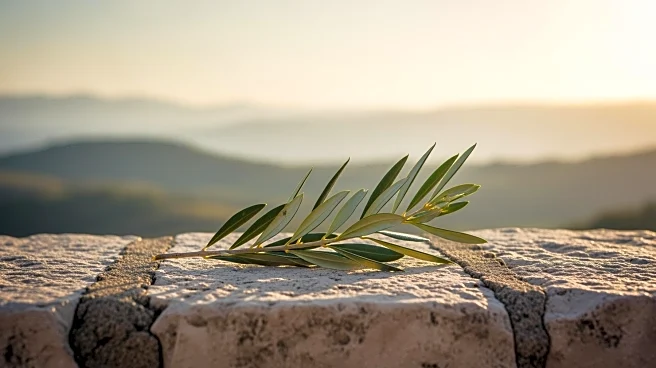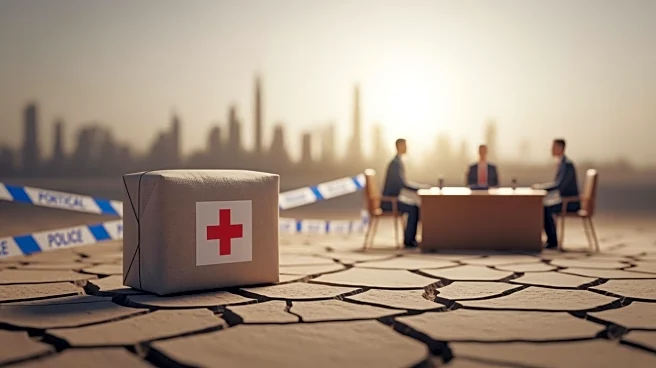What's Happening?
A surrealist art exhibition in Tehran, Iran, was postponed due to a 12-day war initiated by Israeli airstrikes, which also involved the United States. The exhibition, featuring fiberglass sculptures, was set
to open in June but was delayed as artists were stranded at the gallery amid the conflict. The gallery owner, Houman Dayhimi, described the situation as surreal, with missiles streaking across the sky and explosions creating a terrifying atmosphere. The gallery, previously a furniture plant, had been repurposed for art and tech startups after American sanctions led to its bankruptcy.
Why It's Important?
The postponement of the art exhibition highlights the broader impact of geopolitical tensions on cultural and economic activities in Iran. The involvement of the United States in the conflict underscores ongoing international relations challenges, affecting local businesses and artists. The situation reflects the vulnerability of cultural institutions in conflict zones, where political instability can disrupt artistic expression and economic opportunities. The gallery's transformation from a furniture plant to an art space illustrates the adaptive strategies employed by Iranian entrepreneurs in response to sanctions and economic pressures.
What's Next?
The future of the art exhibition remains uncertain as geopolitical tensions continue to affect Iran. Artists and gallery owners may seek alternative venues or digital platforms to showcase their work, adapting to the constraints imposed by the conflict. The international community's response to the airstrikes and their impact on cultural activities could influence diplomatic relations and potential resolutions. Local businesses and cultural institutions may need to develop contingency plans to mitigate the effects of ongoing instability.
Beyond the Headlines
The postponement of the exhibition raises questions about the resilience of cultural institutions in conflict zones and the role of art in reflecting and responding to geopolitical challenges. The situation may prompt discussions on the ethical responsibilities of international actors in preserving cultural heritage and supporting artistic communities affected by conflict. Long-term shifts in Iran's cultural landscape could emerge as artists and entrepreneurs navigate the complexities of operating in a politically volatile environment.
